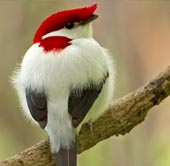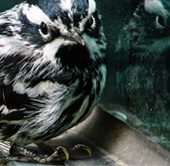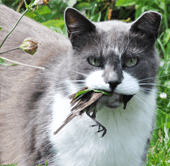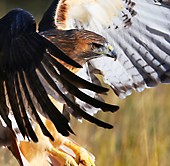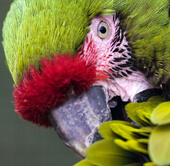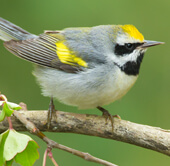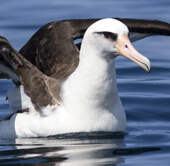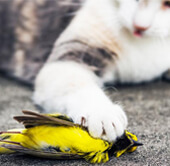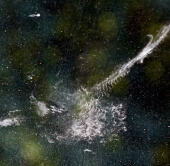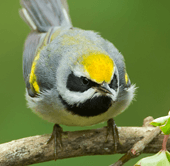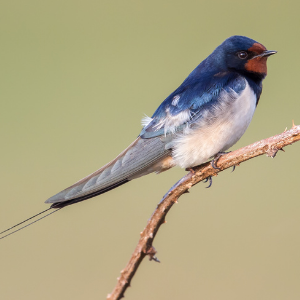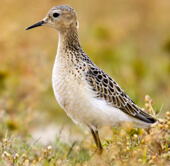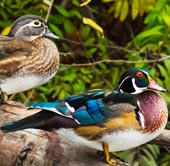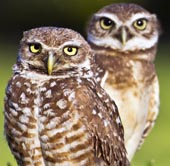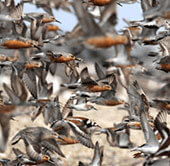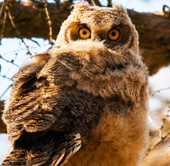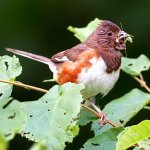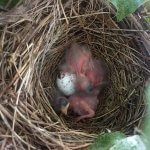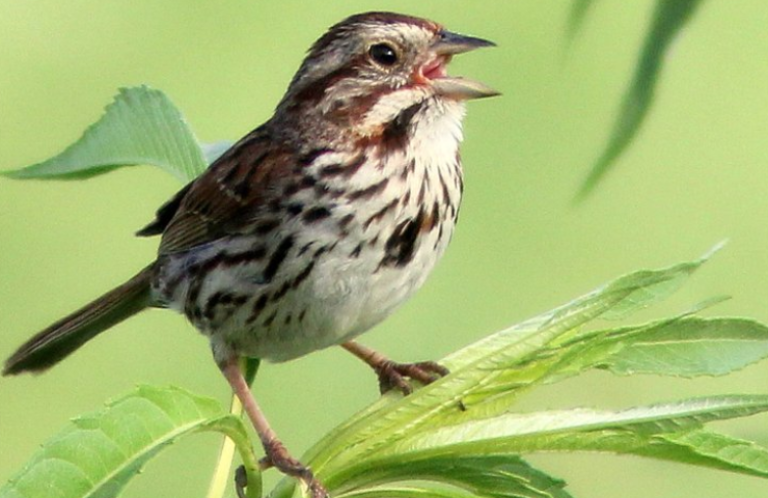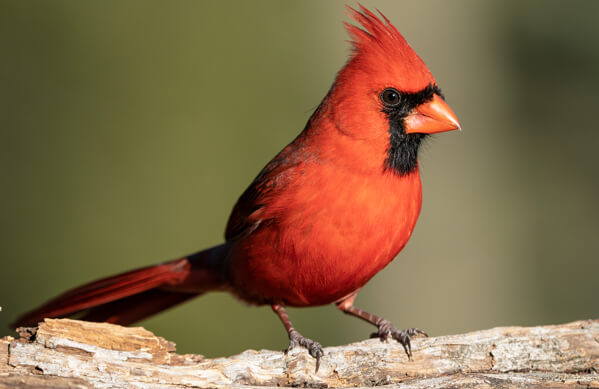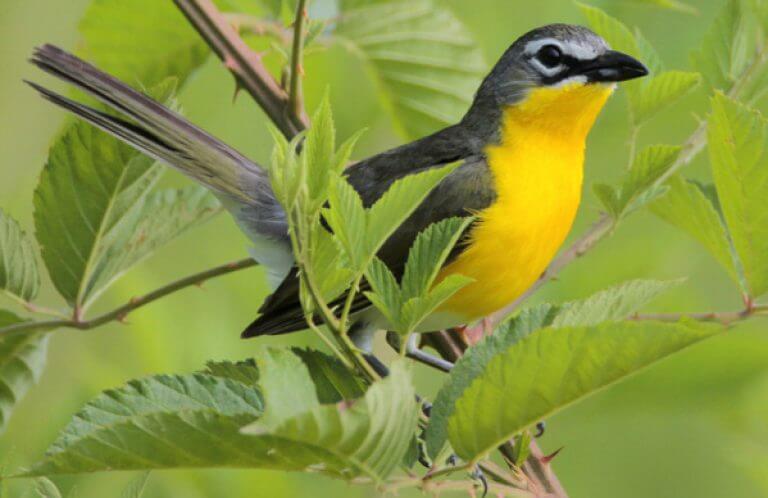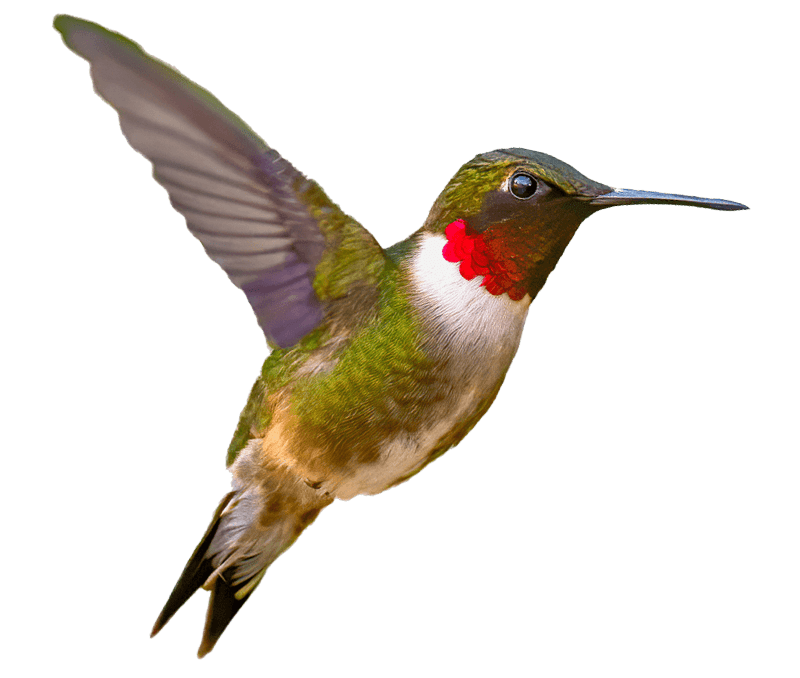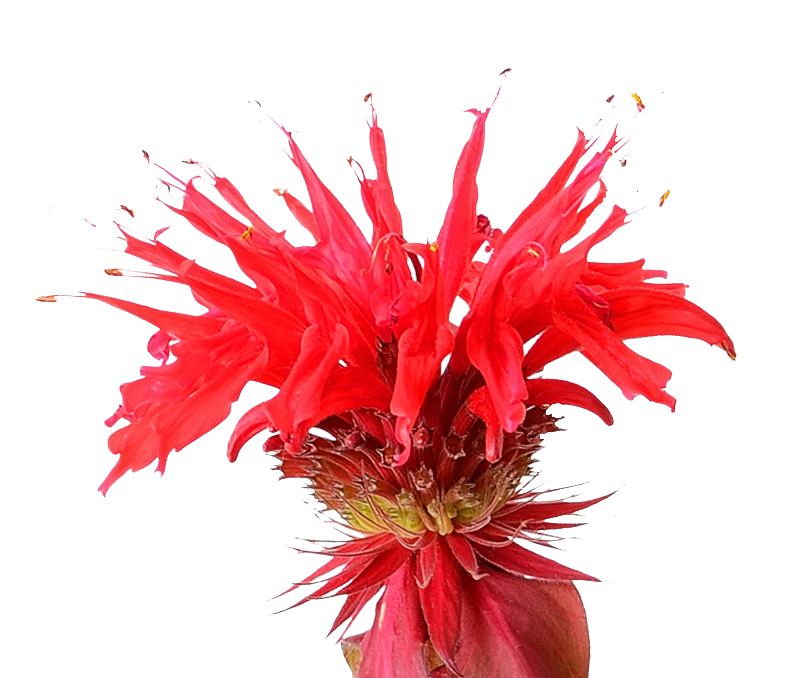About the Eastern Towhee
Persistent scratching sounds amid thick shrubbery and a shrill call, “towhee!” reveal the presence of this striking New World sparrow. The dapper Eastern Towhee and its western relative, the Spotted Towhee, were once considered one species — the Rufous-sided Towhee — but were split into distinct species in 1995. The two species sometimes hybridize in the Great Plains, where their ranges meet.
One way to tell an Eastern Towhee from its Spotted relative is by its dark back, marked only by a small white patch at the base of the wings feathers. True to its name, the Spotted Towhee has a generous smattering of white markings across its wings and back.
The Eastern Towhee has a variety of humorous-sounding folk names such as “chewink” and “joree.”
Like the Eastern Phoebe, Eastern Whip-poor-will, and Northern Bobwhite, the Eastern Towhee tells the listener its name! The word "towhee" is an onomatopoeic description of one of this bird's most common vocalizations – a musical, somewhat shrill two-part call rising in pitch at the end, also described as “chewink” or “joree”.
Its scientific name, Pipilo erythrophthalmus, means “red-eyed chipper” – also an evocative description of this species – though the subspecies found in parts of the southeastern U.S. has distinctive pale yellow eyes.
Songs and Sounds
One of the Eastern Towhee's most common calls is a short two-part “towhee” or "chewink," that rises in pitch on the second note. Its equally memorable song sounds like this bird is urging the listener to “Drink your teeeeea!”
Breeding and Feeding
The Eastern Towhee is often first detected when an observer hears busy scratching sounds in the underbrush. This bird is such an active leaf-scratcher that it can sound like a much larger animal moving through the leaf litter! Like the White-throated Sparrow, Song Sparrow, and other ground-feeding relatives, the Eastern Towhee pushes leaves aside with a jump and backwards kick using both feet, uncovering seeds or potential prey.
Eastern Towhee are omnivorous, feeding on a wide variety of insects, fruit, berries, and seeds. It prefers to forage under or near thick cover, where its habit of scratching through the ground litter in search of food often gives its presence away. It will sometimes jump up or hover to snatch insects and fruit, or glean through the tree canopy, particularly for caterpillars.
Normally a solitary species, the Eastern Towhee forms monogamous pairs during the breeding season. Males stake out and defend a territory, then court visiting females. Once paired off, the male stays close to his mate, “guarding” her until she completes her nest and is sitting on a clutch.
Like many sparrows, the Eastern Towhee nests on or near the ground. The female towhee builds a cup-shaped nest using bark, dead leaves, plant stems, pine needles, and twigs, adding a lining of softer grasses and hair.
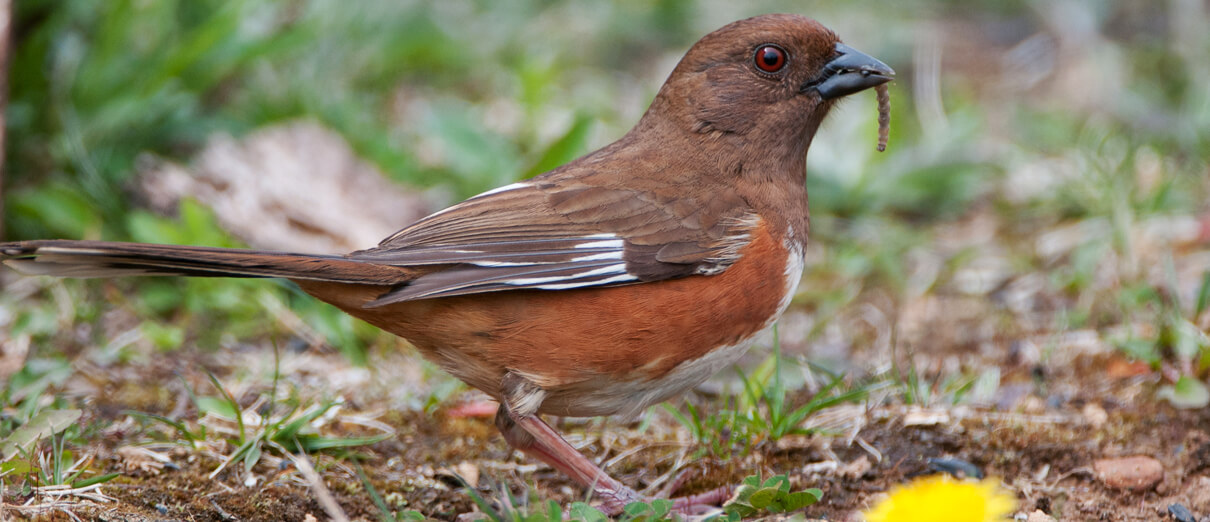
If building on the ground, the female towhee builds in a slight depression in the ground litter, well-hidden at the foot of a tree or shrub. Above-ground nests are concealed in thick, nearly impenetrable tangles of vegetation.
The female Eastern Towhee lays a clutch of 2–6 brown-speckled eggs, which she incubates alone, while her mate brings food and defends their territory. Both parents feed the young after they hatch. Once the young birds fledge, the male will continue to care for them while the female begins a second nesting.
When disturbed, the female Eastern Towhee prefers to run away from her nest like a mouse rather than fly, similar to other secretive birds that nest on or near the ground such as the Grasshopper Sparrow and Eastern Meadowlark.
Eastern Towhee nests are often parasitized by Brown-headed Cowbird, reducing nesting success. Juvenile Eastern Towhees have brown, streaky plumage, revealing their sparrow heritage, but molt into more distinctive adult plumage by the fall and winter.
Region and Range
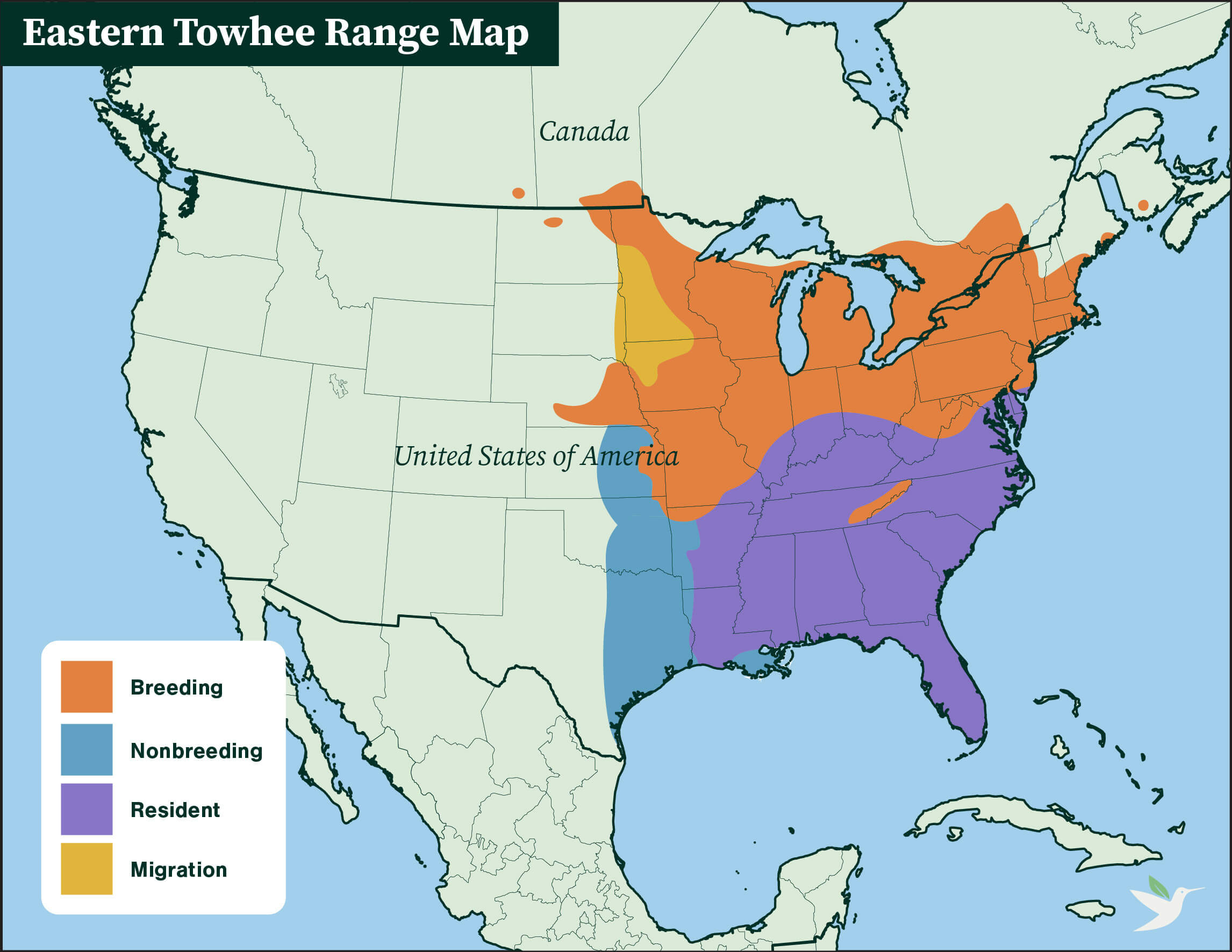
The Eastern Towhee breeds as far north as southeastern Canada south to the Gulf of Mexico and west across to the edge of the Great Plains, where it sometimes hybridizes with Spotted Towhee. It winters in the southern part of its breeding range and in some southwestern states and Mexico.
Northern populations move short distances south to winter in the southeastern United States.
Conservation
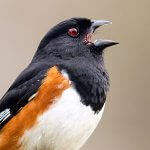
Help support ABC's conservation mission!
Partners in Flight notes significant declines of Eastern Towhee populations over the last 50 years, due to habitat loss from increased suburban and urban development as well as agricultural and forestry activities. The Eastern Towhee's ground-nesting habit and willingness to visit backyard feeders makes it particularly vulnerable to predation by outdoor cats, especially in suburban areas. Tolerance of, and proximity to, human-altered landscapes means that this species is often killed by collisions with communications towers and glass windows.
ABC's advocacy programs continue work to reduce or remove some of the challenges facing the Eastern Towhee across its range. Policies enacted by the U.S. Congress and federal agencies, such as the U.S. Fish and Wildlife Service, have a huge impact on U.S. birds. You can help shape these rules for the better by telling lawmakers to prioritize birds, bird habitat, and bird-friendly measures. To get started, visit ABC's Action Center.
Get Involved
Policies enacted by the U.S. Congress and federal agencies, such as the U.S. Fish and Wildlife Service, have a huge impact on U.S. birds. You can help shape these rules for the better by telling lawmakers to prioritize birds, bird habitat, and bird-friendly measures. To get started, visit ABC's Action Center.
Living a bird-friendly life can have an immediate impact on the birds around you. Doing so can be as easy as adding native plants to your garden, avoiding pesticides, and keeping cats indoors. To learn more, visit our Bird-Friendly Life page.
American Bird Conservancy and our Migratory Bird Joint Venture partners have improved conservation management on more than 8.5 million acres of U.S. bird habitat — an area larger than the state of Maryland — over the last ten years. This is a monumental undertaking, requiring the support of many, and you can help by making a gift today.

